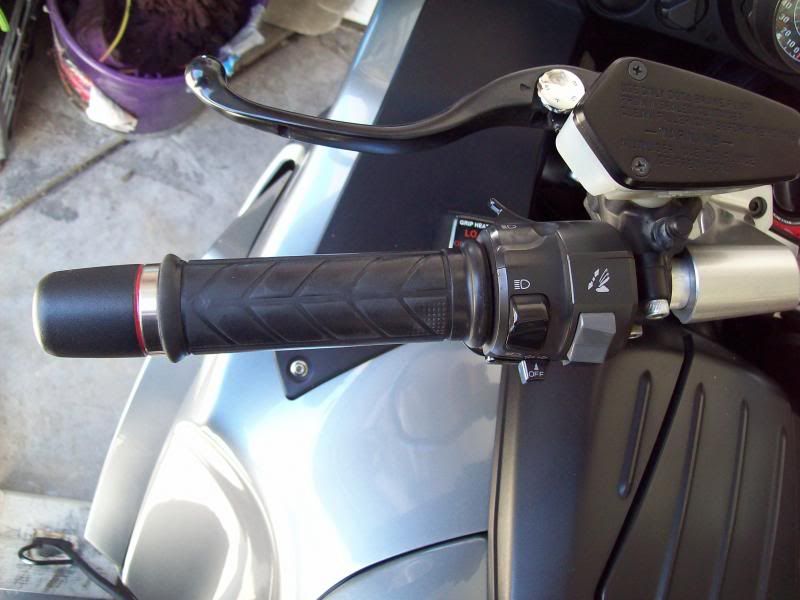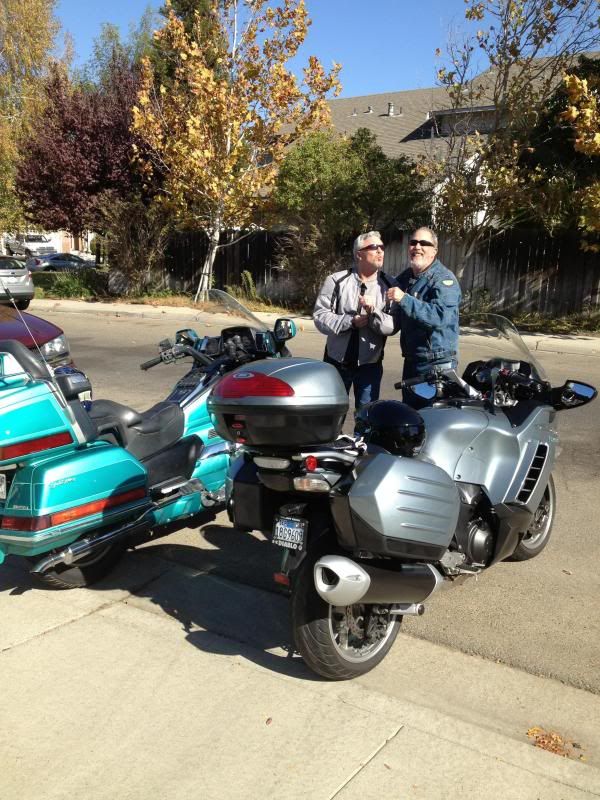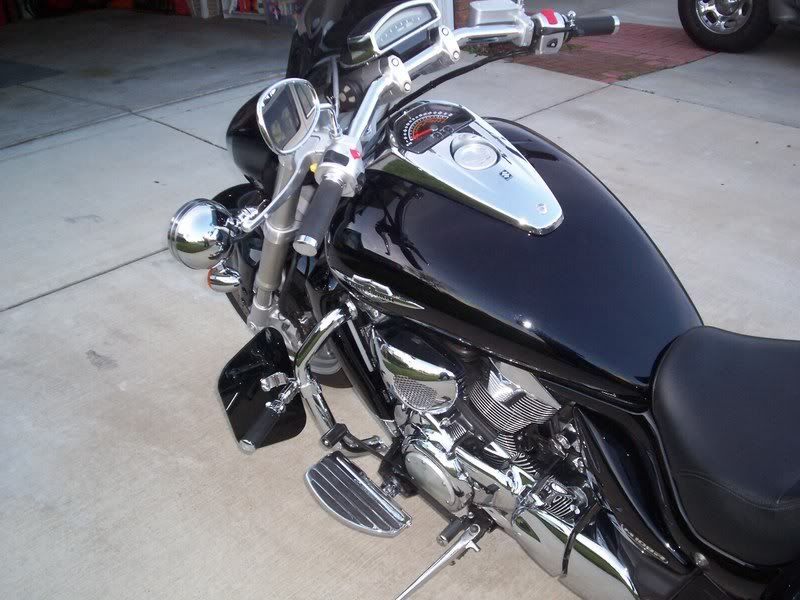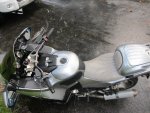cbr1000dude
Bicycle
I'm not sure if this is tech or accessories, so feel free to move it as you see fit.
I changed my 1 inch spacers for 1 1/2 sockets and got longer bolts.

This was close, but I didn't like the angle of the grips, so I bent the bars forward about 1/2 inch at the bar weight ends.

Now it feels just right to me. The bars bent at the point between the lever perch and riser, I'm not sure if you can see it in the photo. I put the front wheel against the wall, turned the bars to lock, and pushed it where I wanted it. They bent quite easily without a long bar I've used to bend other things. Both sides match to my eye and feel. I lowered the shift lever just a bit too. I think I've got it for now.
If this offends anyone, just look away please.
I changed my 1 inch spacers for 1 1/2 sockets and got longer bolts.

This was close, but I didn't like the angle of the grips, so I bent the bars forward about 1/2 inch at the bar weight ends.

Now it feels just right to me. The bars bent at the point between the lever perch and riser, I'm not sure if you can see it in the photo. I put the front wheel against the wall, turned the bars to lock, and pushed it where I wanted it. They bent quite easily without a long bar I've used to bend other things. Both sides match to my eye and feel. I lowered the shift lever just a bit too. I think I've got it for now.
If this offends anyone, just look away please.












